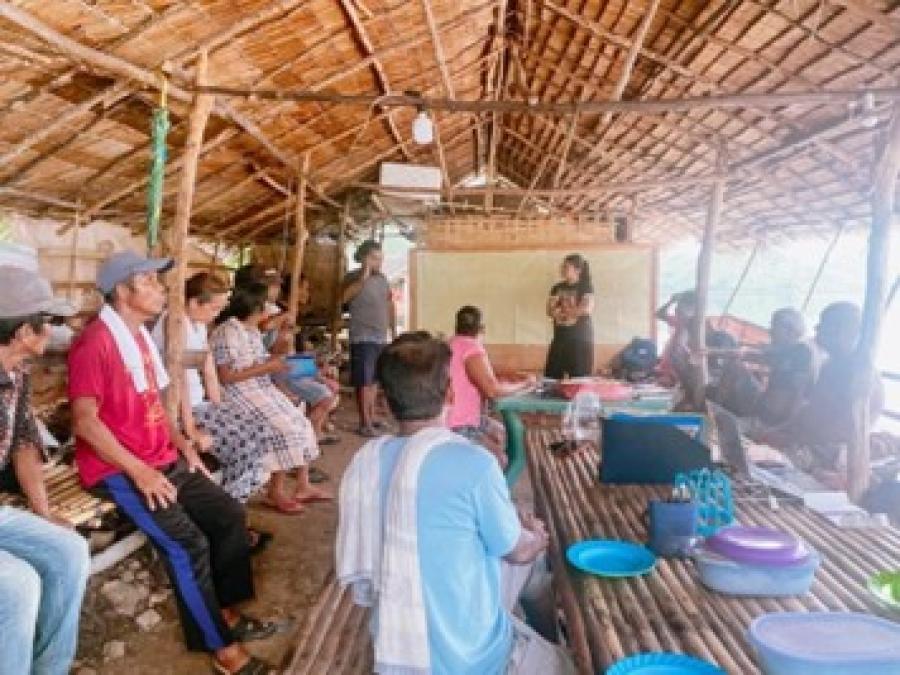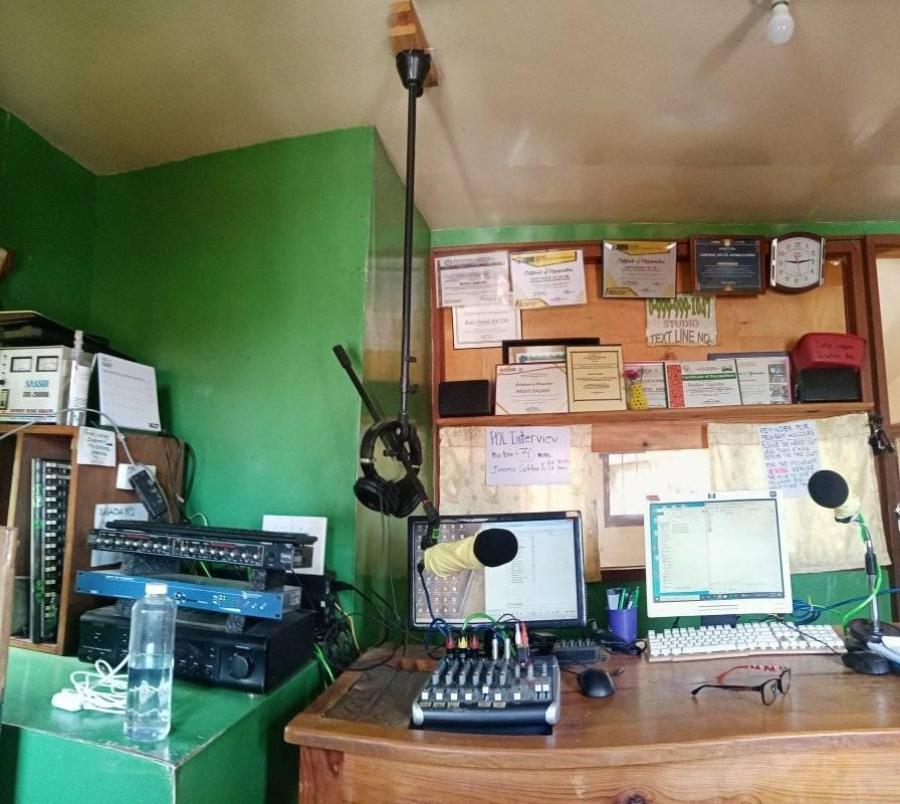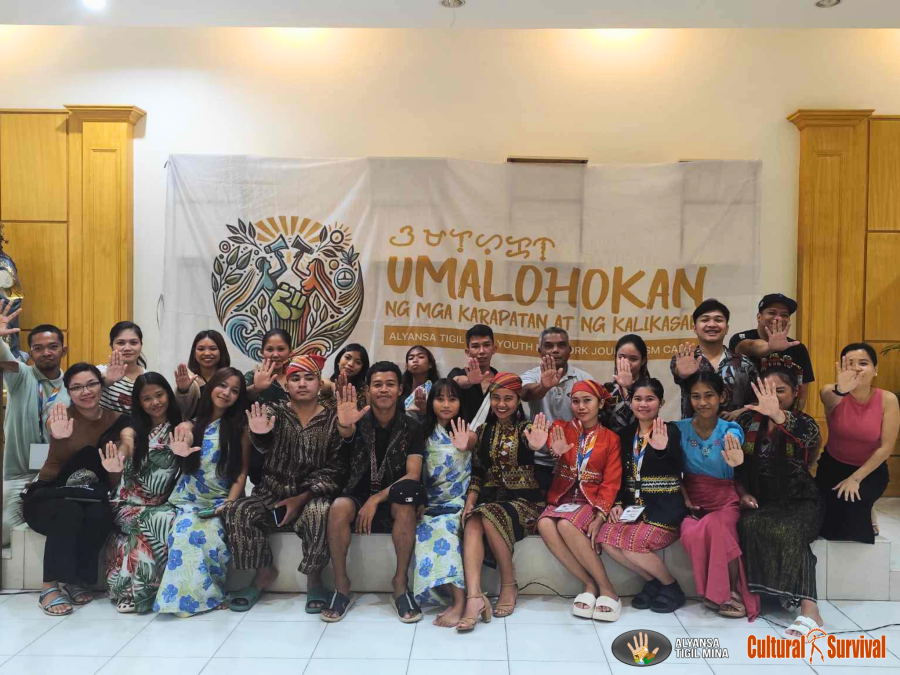Due to the shrinking rainforest and diminished plant and animal wildlife in Mindanao, the Higaonon indigenous people are impoverished, struggling even to provide basic food to their community. Illegal logging and lowland encroachment continue each day throughout the forest, further devastating the ecological balance of these ancestral lands.
In 1999, the Higaonon elders and community envisioned a plan to save their home, the virgin rainforest in northern Mindanao, Philippines. At a sacred gathering, the People's Reforestation Project, later renamed the Tribal Agro-Forestry Technology (TAFT) project, was born. TAFT builds a biodiversified buffer zone on logged areas around existing forest, expanding and protecting it, and maintaining ecological balance without compromising the Higaonon ancestral customary laws. The project creates community capacity-building while providing sustainability. Seeing a need to open their doors and join with international friends to save the forest and Mother Earth, members chose Dam Efren Mandipensa as their representative. As the youngest Higaonon tribal chief ever installed, his task was to "make a road from the forest to the jungle of the city."
With U.S. support from Cultural Survival, The Cottonwood Foundation, Round Up for the Rainforest, New England Bio Labs, the Philipino Worker's Center, and private donors, these indigenous people first implemented TAFT in January 2000. TAFT provides the Higaonon with the means to climb out of poverty into a stable environment, and preserves the integrity of their society by allowing them to live as they have for centuries, with reverence and respect for the land.
A total of 101 hectares have been planted. Because of the tremendous support of the community, the Higaonon have surpassed the goals set forth in their proposals. There are now five TAFT reforestation project sites located at Lumbaan, Lumboyan, Mingkulagsoy, Babaoyan, and Simbalan, with several other sites ready to plant.
Two established tribal barter co-ops are used as a training ground for the Higaonon in resource capacity administration geared toward their struggle for self-determination. The creation of the co-ops bridges the gap between the Higaonon's barter system and their lowland neighboring community's monetary system.
Five nurseries help provide seedlings for the TAFT project and promote a partnership and good relationship with the lowlanders (Dumagats) who show interest in receiving TAFT support.
A building in Simbalan for the Higaonon Tribal Ancestral Domain Office serves as the center for the Higaonon tribal experts. It is a meeting place for Higaonon leaders for the settling of conflicts, and for strengthening of the Higaonon customary laws -- the Bungkatol Ha Bulawan daw Nang Ka Tasa Ha Lana.
The project provides education for 12 Higaonon children to prepare them for future leadership. The community envisions forest Higaonon schools in the future to combine tribal and mainstream education.
These accomplishments are significant because they are the result of ongoing projects designed by the Higaonon elders and community without outside influence and without compromising the integrity of their culture. The tribal community implements and administers the projects, and is feeling a sense of empowerment for the first time in decades.
Building on the energy and enthusiasm generated by its success, the project raises consciousness about the need to preserve the rainforest and stop illegal logging in the ancestral domain. Meetings and discussions on project details are now common in villages across the Higaonon ancestral lands. Broad-based interest in and excitement about the project is unifying the Higaonon and the lowlanders. Some of the lowlanders living near the project site want to replicate the project. They realize that reforesting will replenish natural resources and wildlife until the forest's abundance can support them all. As this awareness expands, hope, unity, and goodwill are building a sacred bond between the two societies.
In fear of losing power and the ability to exploit the poor of northern Mindanao, those who profit from logging are taking drastic measures to prevent the socio-economic advancement of both communities.
Community members in Lumbaan have been harassed and threatened. Locally stationed military forces backed by paramilitary forces and police (who have benefited in the past from illegal logging) have resorted to intimidation tactics to stop the project at this site and to remove the Higaonon. On February 6, 2000, military personnel and the local Civilan Armed Forces Geographical Unit (CAFGU) from Tama shot at the foreman of the reforestation working group. On February 8, the same armed military and CAFGU forces entered the project reforestation site and forced the Higaonon to leave. The harassment occurred despite a Memorandum of Understanding signed in July 1999 between the United Association of Higaonon Tribes in Mindanao (UNAHI-Mindanao) and the Department of National Defense to work together to promote environmental protection.
The Higaonon nevertheless peacefully resumed their work in late March. Once again, military personnel raided the site, threatening to kill anyone who remained. The tribe is now still unable to reside there; they are only allowed to maintain the healthy and thriving seedlings. Despite their eviction, the Higaonon consider the site a success because illegal loggers and slash-and-bum practitioners are avoiding the area.
Attempts to discredit Project Coordinator Datu Efren Mandipensa emerged, beginning with a petition signed by the same military personnel and officials sympathetic to the illegal loggers. The petition sought his removal as a Higaonon representative based on false accusations that his tribal membership was inauthentic and that he was acting for personal gain.
These attempts at character assassination continue as actual physical assassination attempts have forced Datu into hiding. His wife and children were threatened when assassins were unable to find him. His enemies believe that the project will crumble if he is eliminated; with his ability to speak English, Tagalog, Visayan, and Higaonon, he is the Higaonon's voice to the international world.
But his voice speaks yet, and the Higaonon continue undeterred in their mission to preserve the forest. They have successfully established projects in other areas with the support of local barangays and communities. Despite the concerted efforts to denounce Datu, new families join the effort daily. With Datu, the elders continue to develop plans for the project's successful expansion. The Higaonon's goals are attainable with the support of concerned national and international communities.
The Higaonon see the project as their final hope of survival. If the forest is gone, the tribe will cease to exist. These indigenous people are the last true vestiges of tribal life in the Philippines. As a link to the past, they are a precious world treasure.
"Kauhang tonkay alan" (Thank you very much to you all), say the Higaonon. The elders and community express their appreciation for blessings from their friends abroad. "I have been a datu [chief] for many years," says one elder, "and have felt helpless in leading the people.... In the past, our forest was always taken; this is the first time we have ever been given [it] back.... Now, I see hope; hope for the forest -- hope for the tribe. This project is our hope for survival and for the survival of the Bungkatol Ha Bulawan Daw Nang Ka Tasa Ha Lana (ancestral customary laws). Kauhang!
Article copyright Cultural Survival, Inc.



